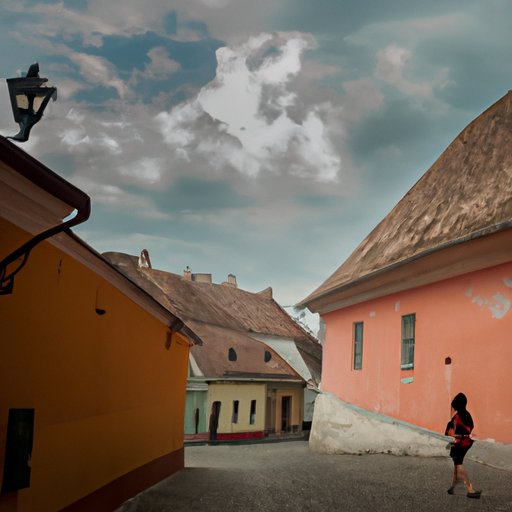I. Introduction
Have you ever read a travel article that left you unsatisfied, wondering what made it different from any other piece of writing? This is precisely the problem many readers encounter in today’s world of online content. The word “travelogue” is thrown around so liberally that it has become difficult to understand what it truly means. This begs the question: what makes a true travelogue?
In this article, we will explore the key elements that define the genre of travel writing. We will examine the evolution of travel writing, its significance in exploring new places and cultures, and why readers are drawn to this literary form.
II. Five Elements of a Travelogue
A travelogue is a written account of a traveler’s experiences during their journey. It is a piece of writing that seeks to transport the reader to a new place, sharing all the wonders and challenges of the journey.
Some of the essential components of a travelogue are:
1. Compelling narrative
A travelogue should tell a story that engages the reader from beginning to end. The narrative should be dynamic and carry the reader along, leaving them eager to discover what happens next.
2. Vivid descriptions
The descriptions in a travelogue are what bring the place to life for the reader. The writer should use all their senses to create a vivid picture of the location, from the sights and sounds to the smells and tastes.
3. Shared sense of adventure
A travelogue should create a sense of shared experience between the writer and the reader. The writer should make the reader feel like they are right beside them as they explore a new place.
4. Other essential elements
A travelogue should also feature practical information, such as details about the location, what to see and do, and tips for the traveler. It should also have a personal touch and reflect the writer’s unique perspective and personality.
5. How these elements contribute to creating a travelogue
When all these components are combined, they create a travelogue that transports the reader to a new place, shares the adventurer’s experience, and inspires curiosity and a desire to travel.
III. The Evolution of Travel Writing
Travel writing has a long and rich history that spans thousands of years. The earliest travelogues were written by explorers and adventurers who documented their journeys in search of new trade routes and territories.
However, the concept of a travelogue has evolved significantly over time. Today, travel writing includes memoirs, guidebooks, and online content, and it has transformed from a tool for discovery into a form of entertainment and education.
Some of the factors that have led to this evolution include the rise of tourism, advances in modern transportation, and changes in publishing technology.
IV. The Power of Place
A key element of travel writing is the power of place, the magic of discovering new cultures and landscapes. Through travelogues, readers can explore new places and experience different ways of life.
Travelogues also appeal to readers because they provide an opportunity to escape the routine of everyday life. By reading about far-off lands and foreign cultures, readers can experience the thrill of adventure and broaden their horizons.
Today, travelogues are more important than ever, as they help to bridge cultural divides and promote understanding between different nations and peoples.
V. Embodying the Experience
A primary function of a travelogue is to create a sense of immersion for the reader. Sensory details are essential components in achieving this goal. By adding smell, taste, texture, and sound, travelogue writers can make the reader feel like they are experiencing the place themselves.
Personal reflections and insights are also key in making a travelogue engaging. By including anecdotes and reflections on personal experience, the travelogue becomes more relatable for the reader, who can imagine themselves in the same situation.
VI. The Role of the Traveler
One of the most significant influences on a travelogue is the traveler’s perspective. Traveler perspectives can vary greatly, depending on their background, personality, goals, and experiences. Different types of travelers, including professional writers, bloggers, and casual travelers, will have diverse motives for writing travelogues and different writing styles.
Identity is also essential. A woman, for example, traveling alone may have a very different experience than a man traveling with a group. Understanding the traveler’s perspective is crucial for creating a travelogue that is engaging and inspiring.
VII. Why We Read Travelogues
So, what draws us to travelogues? There are many reasons why we read these captivating stories. One is the opportunity to explore new places from the comfort of our home. They provide an outlet for our wanderlust and the exploration of cultures, allowing us to broaden our horizons.
Travelogues also offer inspiration for future travel by providing practical advice and insider tips, as well as inspiring new ideas of places to visit.
VIII. Conclusion
In conclusion, defining a travelogue is essential to understanding this popular genre of writing. A travelogue is more than just a simple recounting of events; it is a way to transport the reader to exotic places and to share the traveler’s experiences. By exploring the five elements of a travelogue, the evolution of travel writing, the importance of place and immersion, the role of the traveler, and why we read travelogues, we can gain a deeper understanding of what makes this literary form so appealing.
The beauty of travelogues is that they can transport us anywhere in the world, from the comfort of our homes. They inspire us to explore new cultures and expand our horizons.
So, the next time you read or write a travelogue, take a moment to appreciate the power of the written word, which can literally transport us around the world.
